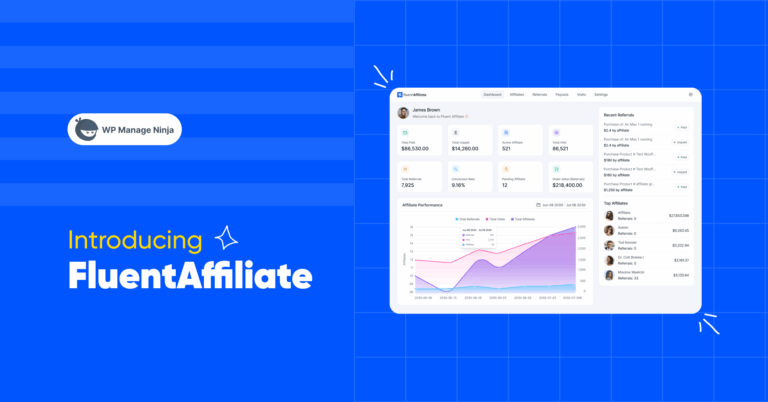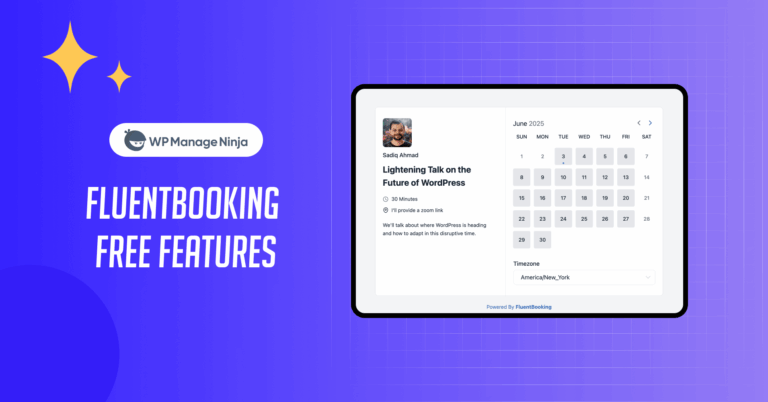
Why Should You Use WordPress Form Builder Plugin?
Share :

We will never spam you. We will only send you product updates and tips.
Most websites have contact forms of some nature on their pages. After all, your audience needs a way to communicate with you directly, right?
WordPress forms are an important addition to your business or personal website, blog, etc. Whatever the type of site you have, your audience needs a secure and reliable way to communicate with you. Most modern websites need more than just a contact form. They need to have like request a quote form, surveys, bookings, content submission, and so on.
The key is to find a form plugin that offers enough advanced functionality and design that you can create something truly unique, but not so complicated that you get lost trying to do so.
Why Use WordPress Form Builder?
It’s obvious and clear about the necessity of having online forms on a website but one common question arises then…!
There’re tons of ways you can mention in favor of having WordPress form builder plugins on your site. The advantages are plenty when using WordPress form builder plugin for your business and website needs.
User Experience
Form plugins offer your site visitors a seamless user experience:
- Offer your visitors, and audience a smooth communication experience.
- When users are filling out the form, if they get interrupted in any way, the auto-save feature ( if available) will make possible filling out the information another time.
- Because they have spam protection, your site visitors do not have to worry about filling out any type of captcha.
- You can upload files.
- Many come with the option to pre-populated fields on the form so users will spend less time filling all fields.
- Add user-guided tooltips to help users fill out your forms.
Form Popup Triggers
Specific information entered into the form automatically triggers pop-up windows. Keep in mind, however, that not all forms come with this feature. By using the various triggers mentioned below, your form conversion rates will increase, and you can capture visitor email addresses:
➦ While a user is scrolling—visitors will often keep scrolling your page(s) if they are interested in your products or services.
Offer them a form to fill out so they can be updated about your future products and services. A newsletter is often what site owners offer their audience.
➦ While they are idle—sometimes, a user will sit idle for any number of reasons. Why not give them a form that pops up after a certain amount of time with no activity.
You could offer them a support form if they need help or even a coupon or discount code for your product or services.
➦ When they are about to leave—when a user is ready to leave your site, you can use a form to remind them of your products, how you can help them, and try to encourage them to sign up for your site.
This may be your last chance to convert a visitor into a subscriber or customer.
➦ Add a form to your sidebar—if you’d rather not bombard visitors with various forms popping up at random, you can add one to your sidebar, and it that way they can choose whether they want to sign up or not.
These triggers are designed to work toward improving your site, your visitors, and even your revenue.
Even if you choose to use only one of two of them, they will have a positive effect on your pages or business.
Conditional Logic
Free as well as premium WordPress form plugins offer users conditional logic. One of the great free form plugins that offer that feature is Fluent Form. In simple terms, it means that form fields are shown to users based on previous values that are filled out.
By using conditional logic, your visitors can be assured that their forms will be routed to the correct department for their concerns and other reasons.
Conditional logic also helps you to create smart forms. These forms will react differently depending on what your users and visitors have done on your site. They record the behavior of your users and react accordingly. Depending on how your users and visitors answer the form field, this feature will show or hide fields.
It does this so that you can gather proper information from your visitors and their actions while they visit your site. For example, you can engage with your repeat visitors by offering them different form fields, then you would for a new customer.
Mathematical Calculations
Another great feature of forms is their ability to allow you to calculate mathematical equations. For example, lets’ suppose a user wishes to buy a product or service from you. On the form, you want totals or averages calculated to show the customer.
Also, if you have a product listing, and a customer chooses multiple numbers of products to purchase, the form calculations can be adjusted to show the proper amount, so the customer doesn’t have to add it up themselves.
Integration With Marketing Tools
Many forms come with email integration tools so that you can collect your subscriber emails automatically. They support providers like MailChimp, Aweber, Active Campaign, iContact, Mad Mimi, Constant Contact, GVO, GetResponse, and some others. The only thing you will need to do is adjust the form fields and configure APIs.
Built-in Analytics
The analytics help you gather the information needed to know what forms are working for your site and what forms are not. The form plugins allow you to keep track of your forms, either daily, weekly, or monthly. This can be accomplished on the backend of your site.
It can show you the numbers of your forms vs the actual forms that have been used by visitors. With this option, you can see if your forms are not being seen on your site, or if your visitors are ignoring them.
By putting all of these aspects forward, you will be able to see where improvement is needed. It makes possible for you to help your customers with their needs and wants.
Integration With Payment Gateways
The option to accept online payments via cards and virtual wallets is essential.
Whether you want to accept online donations or need to collect payments, form plugin can do that. Many have integration with various payment getaways like Skrill, Paysafecard, PayPal, Stripe, etc.
In the case of selling merchandise, products, or services online, the order page can be designed to make the customer see their purchases and a way to gain their trust and loyalty to your brand.
Creating Conversational Forms
Conversational forms are the equivalent to those long forms you probably filled once, but much shorter. Classic forms have boxes that indicate a limited number of choices, etc. And the staggering lineup of questions on some forms can easily overwhelm you.
Conversational forms make the form method short, sweet, and to the point.
With this type of form, questions are given one at a time, once the user answers them, the next question will appear, and so on. Similar to a face-to-face conversation.
The question will remain active until answered, and when the user is ready to move on to the next question or field.
It eliminates the need for visitors to wander all over the form and answer tons of questions. By using this type of form method, you can cut down your user’s time.
Instead of scrolling to answer each question, users can use their keyboard to navigate and answer most questions.
Request a Quote
Do you run a business and want to give your site visitors an easy way to request a quote from you?
Being able to give customers an idea of what they can expect to pay for a service you provide is helpful and can increase conversions.
By using this type of form, users can request specific information from you, and based on their input, you will know what kind of quote to give them. These forms make the potential customer’s experience on your site much easier and pleasurable. They can get all they need to know by filling out a simple form.
Another plus of this type of form is that you can combine and integrate it with email marketing tools. This will ultimately help your business to close more sales, build your customer base, and increase your email list.
Create Surveys and Pools
Survey forms can significantly increase the understanding of what your customers want and need. They also serve other purposes such as market research, employee research, customer satisfaction, job satisfaction, etc.
By creating survey forms, you can easily communicate with your target audience and potential customers, and collect data from the forms to see if you’re going in the right direction, or if you need to make some changes. Polls, as well as surveys, can provide you with instant feedback from your users or visitors and can be created with most form plugins.
Implement Coupon Functionality
Offering coupon codes as a flat or percentage discount is a fantastic way to incentivize your product or service. If you’re selling a product or service through your WordPress forms, you can implement coupon functionality too.
Content Submission
You can accept user-generated content, like guest articles, user reviews, testimonials on your site without having to provide backend access to each user. When a post is submitted through your post submission form, it will appear in your post editor for your review as a new pending post. You can then accept it or reject it.
Additional Add-ons and Features
Forms also have a wide variety of add-ons that lets you extend its built-in functionalities and integrate with other popular tools and apps. For example, some of the add-ons for popular form builder plugins include:
Custom Captcha – Combat spam form submissions.
Geolocation – Collect and store your website visitors’ location data along with their form entry.
Signature – Create a contract form or agreement form and allow users to sign it online with their mouse or touch screen.
User Registration – Create a custom user registration form so users can create an account on your site without visiting the default login page.
Zapier – Connect your form with 500+ web apps.
Booking – Create an option so that form plugin can act as booking with dates, times, available seats, etc.
Form Abandonment – Connect with your leads even if they abandoned the form halfway.
Form Templates – Choose from a vast variety of pre-built templates for your forms.
Features of Form Builder Plugin Final Words
If you want to add forms to your WordPress site, you will see there are many plugins available. However, despite all the available choices, not all form plugins are equal. Some are designed for advanced users, some for beginners, and some are for the ones somewhere in the middle.
The key is to find a form plugin that offers enough advanced functionality so you can create something unique, but not so complicated that you get lost trying to do so. Form builder plugins make adding forms to a WordPress website easy while still catering to power users with more advanced needs.
The free Contact Form 7 plugin already does a great job of allowing WordPress users to add a basic contact form to their website, but if you need more advanced features then Fluent Form, Gravity Forms or WPForms is a great choice.
Author Bio:
Matija Kasapović is the owner of KasaReviews website where you can find everything WordPress related. From tutorials, guides, tips to reviews and comparisons so you can make an informed decision when choosing the right product for your business.
Related Posts
Comments
-
[…] Whatever the use may be, forms must be built such that they are beneficial for both the store owner and customer. If your eCommerce store runs on WordPress, then go no further. You are in the right place for a WordPress form builder plugin. […]
-
[…] This content was originally published here. […]





Leave a Reply
You must be logged in to post a comment.